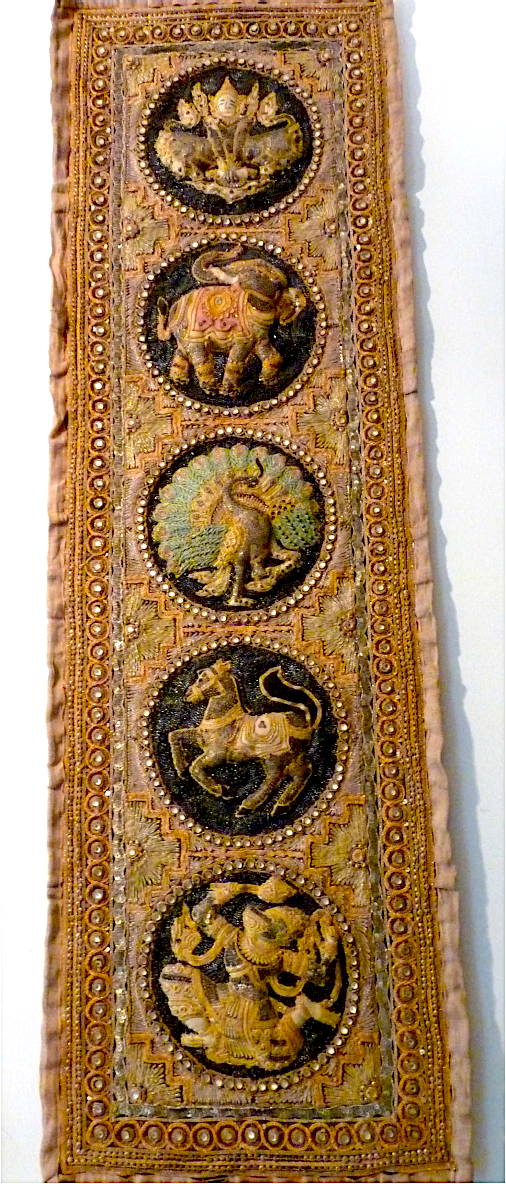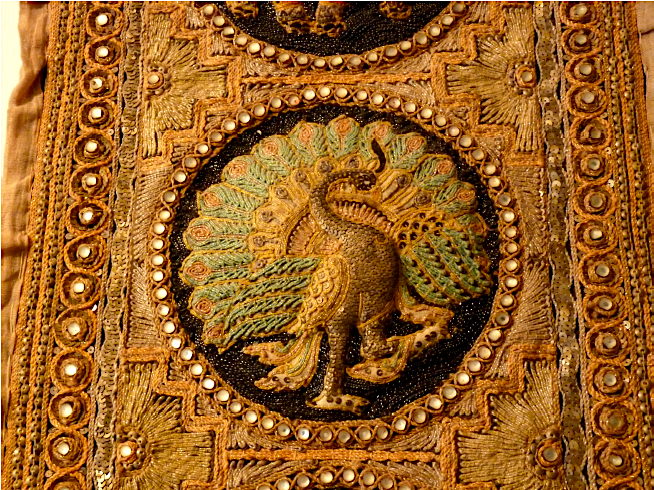Kalaga/Shwe Gyi Do
Given as a gift to Bruce and Sally Nelson by Bruce's students in the Myanmar Ports Authority in 1988.
143.5 x 40.5cm; silk, metallic and cotton thread, sequins, beading, glass stones, and velvet applique on a cotton and velvet background.
Kalaga, also called Shwe-gyi-do or gold thread embroideries, are heavily decorated appliqué tapestries made of silk, flannel, felt, wool and lace cotton adorned with plain and metallic threads, metal sequins, beads and glass "stones" against a background of cotton or velvet. The kalaga, which means "curtain," originated in the Mandalay region in the 19th century, reaching the height of its popularity during the reign of Mindon Min (1853-1878), when velvet became fashionable at the royal court.
In a typical tapestry, padded figures are cut from various types of cloth and sewn onto a background, usually red or black cloth, to form an elaborate scene. Kalagas commonly depict stories from the Jatakas (Buddha's journey towards enlightenment) and the Ramayana as well as historical scenes, lucky animals and signs of the zodiac. This example features two nats (supernatural beings), the Sinnet or black elephant, the horse which plays an important role in Burmese puppet theatre, and a peacock, the sign of the Konbaung dynasty.
A key element in the popularization of the kalaga was its relationship to the Burmese marionette theatre. In Burma, as in many tropical countries, the interiors of homes, palaces and temples were built with few permanent partitions so that air could circulate freely. Kalaga were originally used to provide some degree of privacy and were made of undecorated strips of cloth. However, by the 1870s, as foreign materials became readily available, the hangings had been transformed into lavish reproductions of memorable scenes from popular puppet performances. They became so fashionable that they were hung not only in the interiors of buildings but on exteriors as well, and it became popular to use kalaga as coffin coverings or palls at the elaborate funerals of the wealthy or important. Even now, the figures shown in kalaga continue to be depicted in the stylized marionette tradition.
Detail of kalaga featuring a peacock. The intricacy of the decoration can be clearly seen here. | Bruce Nelson with his students.
Nelson South East Asia Collection © 2025


